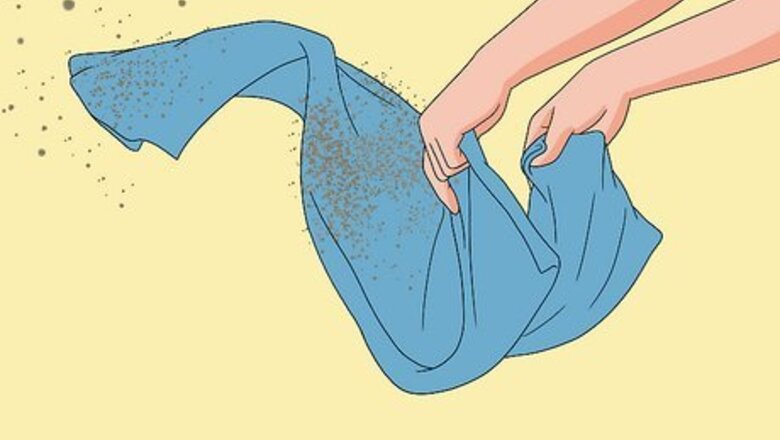
views
Cleaning Soot Off Fabric
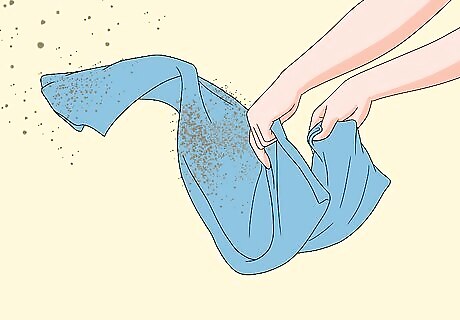
Shake off excess soot. Take the soot-stained fabric outdoors and gently shake off any excess soot. Be careful not to shake too vigorously so that you don’t make the stain bigger or spread the soot around any more than is necessary. If you shake the fabric too vigorously, you also risk grinding the soot into the fabric – ultimately making it harder to clean.

Run the fabric under cool water. For fabrics stained with soot, try rinsing them with cold water to remove the stain. Turn the fabric inside out and run it under cool water to get as much of the soot out as possible. Try not to spread the stain further or grind the soot into the fabric with your hands. Try to let the cold water do its job and avoid touching the soot during the process.
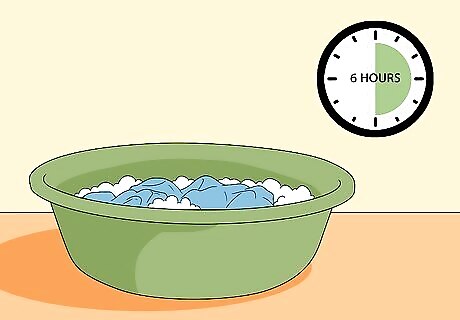
Soak soot-stained materials overnight. If you have soot stains on fabric materials like clothing, you can try soaking them overnight in laundry detergent. Fill a bucket with warm water and a small amount of laundry detergent and submerge the items. Let the fabric soak for at least six hours. If the soot-stained items can be bleached without being ruined, add a few drops of bleach to the detergent/water mixture.
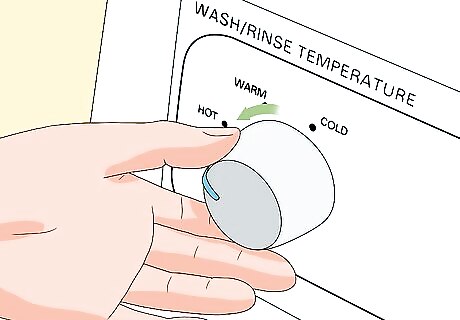
Wash the fabric in hot water. Use the hottest possible setting on your laundry machine to wash the soot-stained fabric. Use bleach (or color safe bleach, if the fabric requires it) when you run the washing machine. Make sure that you have done all you can to minimize the soot stain before you actually wash the fabric. Using several methods together will be much more effective at removing the stain than just attempting one method. Don’t put the fabric in the dryer until you have checked to make sure the soot stain was completely removed. Otherwise, this could permanently set the stain in the fabric.
Cleaning Soot-Stained Upholstery and Carpet
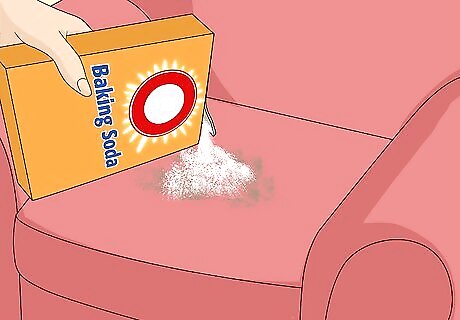
Soak up some of the soot with baking soda. Sprinkle a bit of baking soda on the soot stain on your upholstery or carpet. The baking soda will work to absorb some of the excess soot on the surface of the stain. Be sure that you completely cover the stain with the baking soda. Let the baking soda sit for fifteen minutes and then vacuum it up. You can also use cornstarch as an alternative for baking soda.

Use a vacuum. Hold the nozzle of the vacuum hose attachment just above the surface of the sooty fabric and let the suction of the vacuum cleaner lift the soot off of the fabric for you. Don’t press the vacuum hose nozzle directly up against the soot-stained fabric, as this could cause the soot to fly everywhere and create an even bigger mess. For most fabrics or upholstery, you should try to vacuum up as much of the soot as possible first. This will help prevent the soot from settling onto other surfaces during cleaning and help permanently remove the soot from the area.
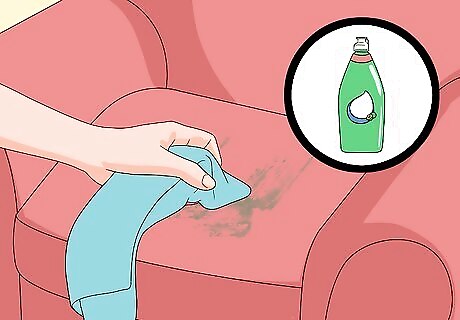
Dab the stain with a cleaning solution. Make a solution of 2 c (470 mL) of cool water and one tablespoon of dishwashing liquid. Dip a clean white rag in the solution and wring out the excess. Then dab the washcloth on the soot stain repeatedly until the stain comes out. Keep blotting the soot stain with the washcloth until it is diminished to your satisfaction, while occasionally rinsing out the cloth with cool water and dipping it back in the cleaning solution.
Removing Soot from Hard Surfaces
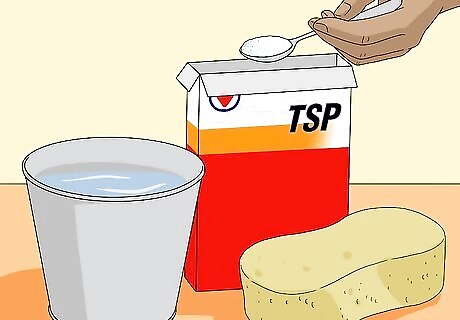
Use trisodium phosphate cleaner and water. Add one tablespoon to trisodium phosphate cleaner to 1 US gal (3.8 L) of warm water. Dip a large sponge into the mixture and scrub the soot off of the walls (or other hard surface). After scrubbing with the cleaning mixture, rinse the hard surface with a clean wet rag. You may need to repeat this process several times. Work on one section at a time so that you can scrub and clean as you go. Be sure to use rubber gloves when handling the cleaner because it is quite harsh and can damage your skin.
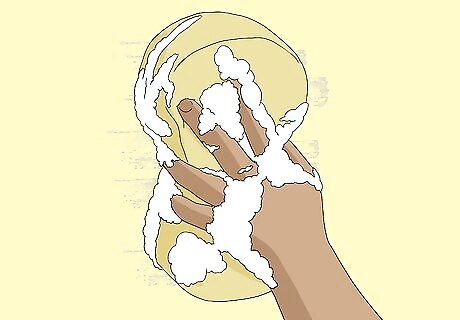
Use a sponge and cleaning detergent. Most hard surfaces with soot stains can be cleaned by scrubbing them with a sponge (or towel) and a regular household cleaning detergent, like an all-purpose cleaner. Simply spray some of the cleaner on the sponge and wipe the soot away. You will need to rinse the sponge periodically so you don’t just keep transferring the soot stains as you clean. Start from the bottom and work your way up. This can be very effective in preventing the soot from transferring onto other surfaces, which could cause the mess to get bigger or even create a permanent stain.
Taking the Proper Precautions
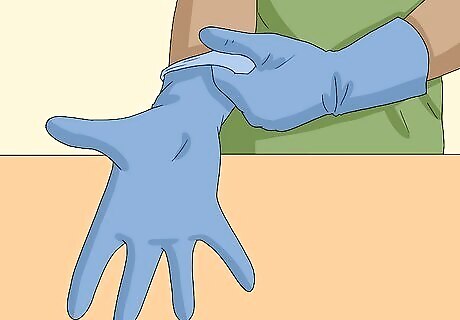
Wear gloves. Soot and ash can be quite harmful to the body, regardless of whether it is inhaled or if it settles on exposed skin. Proper precautions must be taken to avoid exposure to soot. This includes wearing gloves while handling or cleaning up soot and ash. Try to use rubber gloves (like the dishwashing gloves) to protect your hands. You should also wear long sleeves and pants while cleaning up soot to help protect your skin even more.
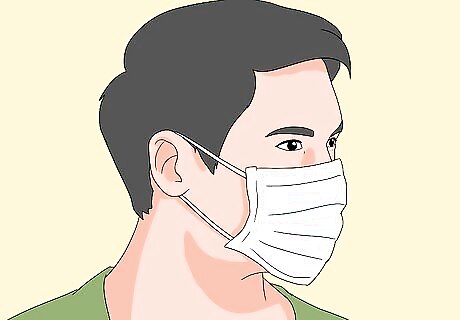
Use a dust mask. The largest health risk, when dealing with soot, comes from the possibility of inhaling the soot and ash particles. These particles can get into your lungs and cause a great deal of damage, especially over prolonged exposure. You can purchase dust masks at any home improvement store and even most larger grocery stores. If you can’t find a dust mask, use a bandana or t-shirt tied around your head to cover your mouth and nose.
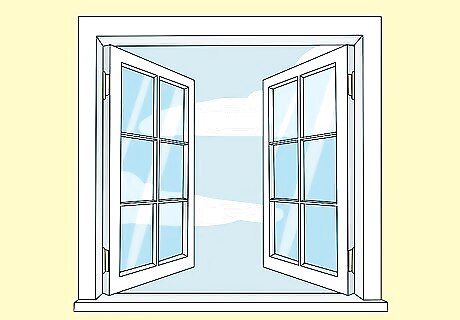
Ventilate the area. Whenever you are cleaning up soot, you want to make sure the area is properly ventilated. It can be harmful for you to breathe in the dust particles from the soot, as well as any cleaning solutions you may be using. If possible, try to clean up sooty items outdoors. But if you must clean it inside, open all the windows you can and take frequent breaks.
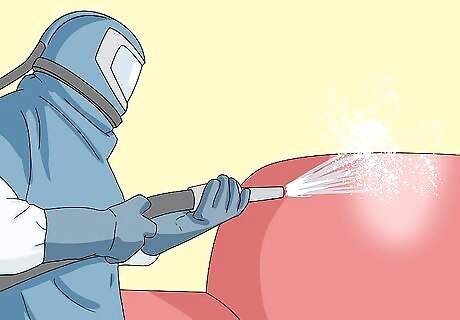
Try low-pressure sandblasting. This method of cleaning should only be attempted in outdoor areas. Use the low-pressure sandblasting machine to spray off any soot residue from your hard surface. Try to use the lowest velocity spray possible to keep the soot from flying everywhere. You should be able to rent a low-pressure sandblasting machine at any major home improvement store. You can also hire a professional to do this kind of cleaning.

Call a professional. If you are unsure about what to do, or cleaning the soot seems like too big of an undertaking, consider calling in a professional cleaner – particularly one that specializes in soot cleanup. Don’t attempt to clean the soot yourself if you are uncomfortable with the process. Professional cleaners can make the hassle of cleaning up the soot much easier to handle, but they can be a bit pricey. Consider price checking several places before deciding on a service.

















Comments
0 comment